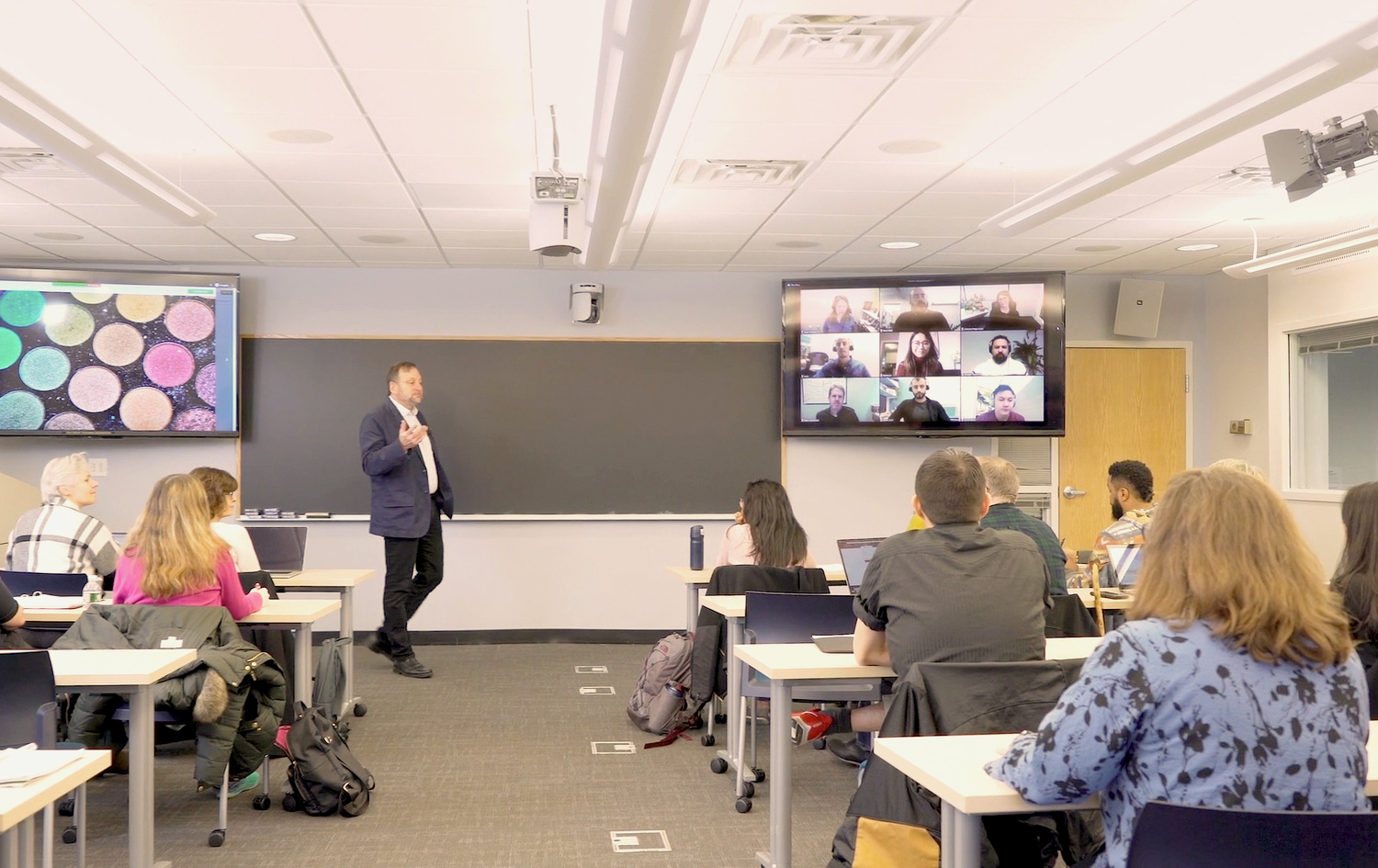Instructors at Harvard Extension School (part of Harvard Division of Continuing Education) can now accommodate teaching students learning both in person and remotely in nearly every classroom thanks to the portable technology software HELIX.
HELIX technology, an acronym for Harvard Extension Live Interactive Experience, was first designed as a classroom equipped with microphones, speakers, large screens, and a camera operator to allow students participating remotely to hear and see their classmates.
Remote students’ faces are displayed on large screens for the class to see, and the camera — operated by a technician from the DCE’s Teaching and Learning department — allows for remote learners to view their peers. Currently, there are eight HELIX classrooms outfitted with this technology, but the portable HELIX unit is capable of transforming almost any room into a classroom.
A key difference between the HELIX classroom itself and the portable units is the use of cameras. Portable HELIX units omit the bulky camera equipment, screens, and operator in favor of individual students using Zoom to view classmates, augmented by high quality audio technology.
Professors Daniel L. Smail and Matthew J. Liebmann used a regular HELIX Classroom last spring to co-teach General Education 1044: “Deep History.” While Smail taught students from the classroom, Liebmann gave remote instruction via Zoom in what he describes as a “seamless” experience.
Liebmann said he hopes to further implement this technology in his teaching, citing its potential use to bring students from different universities and geographical locations together. He also said he hopes to use the technology to include students from tribal colleges.
“I actually have a vision for one of my classes that would include participation from students at tribal colleges.” Liebmann said. “I can imagine trying to use the HELIX classroom to bring together Harvard students with the students who would be coming in remotely.”
Adrienne Phelps-Coco, executive director of teaching and learning in the DCE’s Teaching and Learning Department, said the HELIX technology aims to foster connection between instructors and students even in a remote setting.
“We try to create the most human learning experiences that we can,” Phelps-Coco said. “It’s not about delivering content. It’s really about ‘how do we connect people to other people?’”

